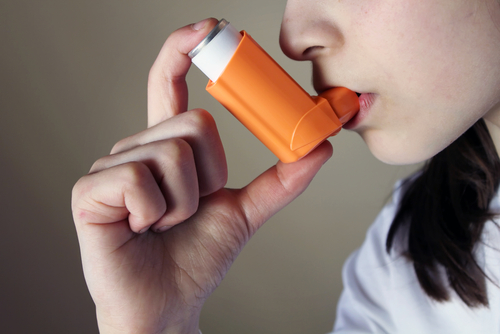 Not all asthma sufferers display similar disease characteristics, and one of the reasons behind this discrepancy may be different patient backgrounds concerning occupational environments and smoking habits. One study, published in BMC Pulmonary Medicine by Drs. Jodie L. Simpson and Peter G. Gibson of The University of Newcastle in Australia, identified these differences in adult patients with refractory (severe) asthma.
Not all asthma sufferers display similar disease characteristics, and one of the reasons behind this discrepancy may be different patient backgrounds concerning occupational environments and smoking habits. One study, published in BMC Pulmonary Medicine by Drs. Jodie L. Simpson and Peter G. Gibson of The University of Newcastle in Australia, identified these differences in adult patients with refractory (severe) asthma.
“The influence of occupation and ex/passive smoking on inflammatory phenotype is not well understood,” stated the researchers in their article, “Occupational Exposures, Smoking and Airway Inflammation in Refractory Asthma.” Motivated by this gap in knowledge, Drs. Simpson and Gibson, along with collaborators in Arizona State University, identified 66 patients with refractory asthma who reported exposure to cigarette smoke as a result of personal habits or their occupations.
An asthma-specific job exposure matrix was compiled after the refractory asthma patients filled out a questionnaire. The matrix showed that 19 patients were previous smokers, with a median of 1.7 smoking pack years. Although some patients were ex-smokers, many are still exposed to cigarette smoke by members of their household, which is consistent with recent reports from the CDC. Ex-smokers were more likely to tolerate smoking inside their household than never-smokers. Within the workplace, 20 of the asthma patients in the study were exposed to asthmagens, including motor vehicle exhaust and environmental tobacco smoke.
[adrotate group=”3″]
To identify some of the effects of environmental exposure to asthmagens, the researchers conducted an exhaled carbon monoxide assessment on all patients and assessed the carbon content of inflammatory cells for a subset of patients. Patients who were diagnosed with asthma later in life (past the age of 30 years) were more likely to have higher levels of inflammatory cells in their sputum than patients diagnosed at an early age. “Sputum neutrophils are elevated in refractory asthma with exposure to occupational asthmagens,” noted the authors.
Ultimately, the researchers determined that exposure to environmental asthmagens as a result of personal habits or the workplace contributed to the form of a patient’s asthma. According to the authors, “This may help explain asthma heterogeneity and geographical variations in airway inflammatory phenotypes in asthma.”
Building off of this work, doctors may be more attuned to the geographical location of their practice and aware of any environmental asthmagens that may aggravate their patients’ asthma symptoms. This is especially important for refractory asthma, as it is considered a severe form of asthma that often requires treatment with oral steroids.

